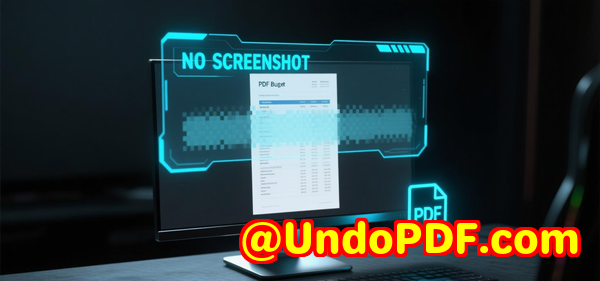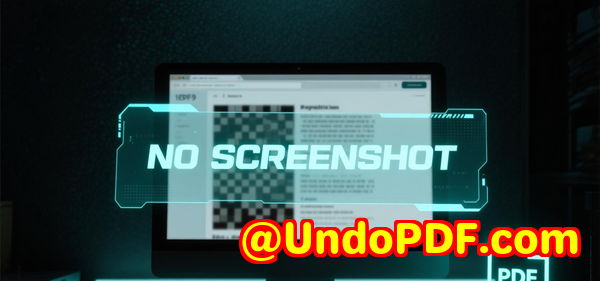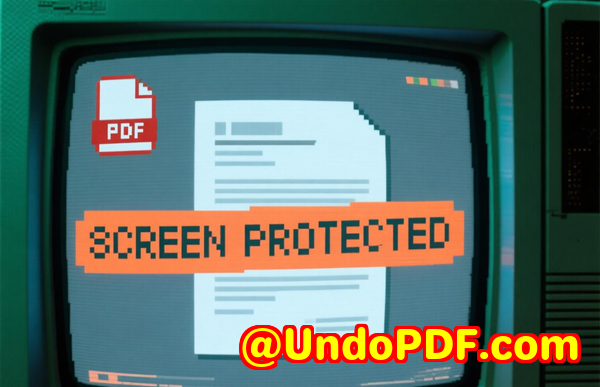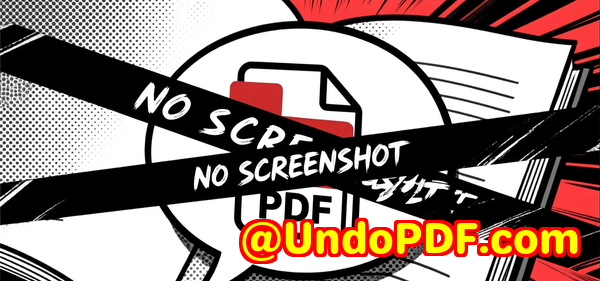How DRM prevents screenshots of sensitive PDF compliance reports in corporate audits
How DRM Prevents Screenshots of Sensitive PDF Compliance Reports in Corporate Audits
Every time our finance team prepares for corporate audits, I used to worry about one thing above all: sensitive PDF reports ending up in the wrong hands.
Imagine working late into the night on quarterly financial compliance reports, only to realise that a single screenshot could potentially leak confidential information externally.
For auditors, legal teams, and finance departments, this isn’t just a minor inconvenienceit’s a real compliance risk.

That’s when I discovered VeryPDF DRM Protector with Screen Shield, a tool designed to prevent exactly that.
It wasn’t just another PDF security tool promising the moon; it delivered tangible results that changed the way I handled sensitive documents.
Why Standard PDF Security Isn’t Enough
In the past, I relied on password-protected PDFs or encryption alone.
Sounds secure, right? Wrong.
Even with strong passwords, recipients could still:
-
Take screenshots of confidential reports.
-
Use software plugins to bypass viewing restrictions.
-
Stitch together multiple screenshots to reconstruct the full document.
It hit me during a quarterly audit prepour reports contained intellectual property and sensitive financial numbers.
One slip-up, and it could be catastrophic for compliance.
Enter VeryPDF DRM Protector with Screen Shield
I first came across VeryPDF DRM Protector while searching for ways to safeguard our audit PDFs beyond passwords.
What stood out immediately was the Screen Shield feature.
Screen Shield isn’t just a fancy overlay; it fundamentally changes how recipients can view your files.
Here’s what it does:
-
Reduces visible screen area with a moveable filter, making screenshots partial.
-
Blocks content if a screenshot attempt is detected or if the viewer moves away from the tab/window.
-
Disables zoom in/out buttons, so no one can zoom out and capture a full page at once.
-
Works alongside dynamic watermarks showing email, IP, or viewing time, discouraging any attempt to leak content.
I remember testing it with our finance team. We set the viewable area at 20%, and it was astonishing how effectively it prevented full-page captures.
Even our tech-savvy auditors admitted it would take considerable effort to bypass.
How I Use Screen Shield in Real Scenarios
Let me give you a practical example.
We recently had a corporate audit, and I had to share a 100-page PDF containing financial KPIs, budget forecasts, and intellectual property insights.
Before DRM Protector:
-
I had to worry about who could take screenshots.
-
I spent hours monitoring downloads and sending follow-up emails for document security.
After enabling Screen Shield:
-
I uploaded the file to the VeryPDF cloud.
-
I set the viewable area to 35% for auditors.
-
Enabled dynamic watermarks for email and timestamp.
The result?
-
Auditors could review the reports normally without feeling restricted.
-
Attempted screenshots were blocked automatically, or only partial content appeared.
-
I received instant view notifications and detailed tracking analytics: who viewed what, for how long, and from where.
It saved me hours of oversight, and the team felt confident sharing sensitive documents.
Core Advantages That Set It Apart
Here’s why VeryPDF DRM Protector stands out for corporate compliance:
-
Advanced Access Control
-
Invitation-only access, password protection, or email validation.
-
Revoke access at any time if documents go to the wrong person.
-
-
Recipient Identity Verification
-
Users verify identity before viewing.
-
Eliminates anonymous sharing.
-
-
File Tracking & Analytics
-
Track who viewed files, from where, and for how long.
-
Exportable reports help during audits.
-
-
Dynamic Watermark & Screen Shield Combo
-
Watermarks tie viewers to their identity.
-
Screen Shield ensures screenshots are incomplete or blocked.
-
-
Easy Cloud Import & File Management
-
Upload from Dropbox, Google Drive, Box, OneDrive.
-
Replace files as new versions without losing access control.
-
In my experience, no other PDF security tool I tried combined screenshot protection, dynamic watermarking, and detailed analytics so seamlessly.
Use Cases Where DRM Protector Shines
I’ve found Screen Shield especially useful in:
-
Corporate Audit Reports: Sensitive financial data protected from unauthorized sharing.
-
Legal Documents: Contracts, NDAs, or compliance agreements where screenshots can create leaks.
-
Intellectual Property Files: Design blueprints, R&D reports, patent drafts.
-
Examination Materials: Question papers, grading rubrics, and assessment templates.
One standout moment was when we had to share exam question drafts with external reviewers.
With Screen Shield and dynamic watermarking, I could finally send the files without second-guessing whether they’d be leaked.
Personal Experience: Time Saved & Peace of Mind
Before DRM Protector, sharing sensitive PDFs felt like walking on a tightrope.
Even if the recipients were trusted, I constantly feared accidental screenshots.
Now, I:
-
Upload files to the VeryPDF cloud.
-
Apply Screen Shield and dynamic watermarks.
-
Invite recipients and monitor access in real-time.
It’s effortless, secure, and scalable.
I’ve reduced oversight hours by more than 50%, and the finance team trusts the system completely.
Compared to other tools:
-
Standard PDF encryption only locks the file. It doesn’t prevent partial captures.
-
Other DRM solutions often require complex setup or local software installation.
-
VeryPDF DRM Protector works in the browser, integrates dynamic watermarks, and provides analytics instantly.
Key Takeaways
VeryPDF DRM Protector with Screen Shield solves real-world problems:
-
Prevents unauthorized screenshots.
-
Protects highly confidential PDFs like audit reports and legal documents.
-
Provides actionable analytics on file access and usage.
-
Integrates dynamic watermarking and content protection in one solution.
From my perspective, if you handle sensitive corporate reports, this is a no-brainer.
I’d highly recommend it to anyone who deals with large volumes of PDFs that require security beyond passwords.
Click here to try it out for yourself: https://drm.verypdf.com/
Custom Development Services by VeryPDF
VeryPDF offers tailored development services to meet your specific technical requirements.
Whether you need PDF processing solutions on Linux, macOS, Windows, or server environments, or custom utilities in Python, PHP, C/C++, Windows API, Linux, Mac, iOS, Android, JavaScript, C#, .NET, or HTML5, VeryPDF has the expertise.
They specialise in creating:
-
Windows Virtual Printer Drivers for PDF, EMF, and image formats.
-
Printer job capture and monitoring utilities.
-
System-wide and app-specific hooks to monitor and intercept Windows APIs.
-
Document analysis, barcode recognition, OCR, and table recognition for PDF and TIFF.
-
Report generators, image/document conversion tools, and cloud-based solutions.
-
Advanced PDF security, digital signatures, DRM protection, and virtual data rooms.
For custom solutions, contact VeryPDF via: https://support.verypdf.com/
FAQs
1. How does Screen Shield prevent screenshots?
Screen Shield reduces the visible screen area, blurs content on screenshot attempts, and blocks third-party screenshot software, making unauthorized captures incomplete.
2. Can I use DRM Protector for non-PDF files?
Yes. It supports Word, Excel, PowerPoint, images, and even video files.
3. Is recipient identity verification mandatory?
You can enable or disable identity verification based on the sensitivity of your files.
4. Can I revoke access after sharing a document?
Absolutely. Access can be revoked instantly if a file is sent to the wrong person.
5. How does dynamic watermarking enhance security?
Dynamic watermarks display recipient information, timestamp, and IP address on the document, discouraging sharing or screenshots.
Tags/Keywords
-
Prevent PDF screenshots
-
Corporate audit document security
-
PDF DRM protection
-
Sensitive report security
-
Screen Shield PDF tool



